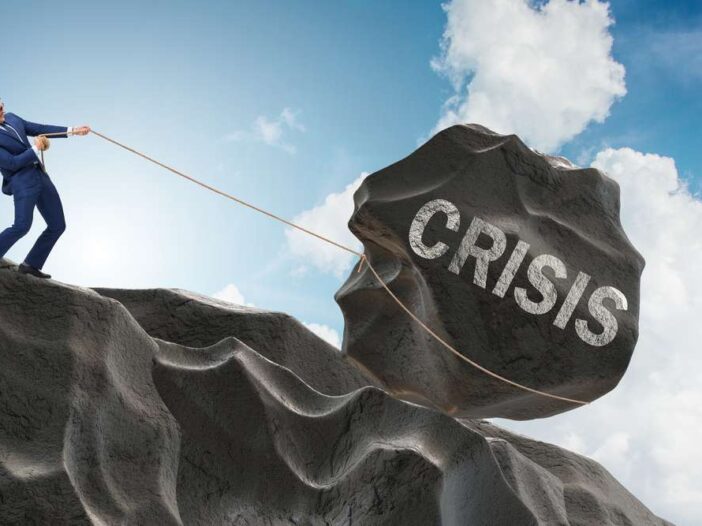All investors recall the 30%-plus market collapse last March, skyrocketing unemployment, and the near complete shutdown of the global economy. Annualised US GDP growth in the second quarter of 2020 was -31.4%, the biggest quarterly drop in US history. And the National Bureau of Economic Research — the designated scorekeeper for when recessions begin and end — declared that a recession began in February 2020. No one doubts that call for an instant.
Since then, some things have much improved.
The stock market roared back to new all-time highs by September for the S&P 500 and the NASDAQ Composite. The Dow hit a new all-time high in mid-November. Unemployment fell to 6.9% in early November — still high, but a big improvement over the 14.7% unemployment rate we saw last May. Annualised GDP also bounced back. It was up 33.1% in the third quarter. That was not enough to make up the first-half’s decline, but it was a good start.
So, with unemployment down, the economy up, and stocks at new all-time highs, does this mean the coast is clear and the pandemic panic is over? Unfortunately not.
How to Survive Australia’s Biggest Recession in 90 Years. Download your free report and learn more.
A lingering depression and a double-dip recession
The technical recession was over by 30 June, but the depression lingers on. More importantly, it looks like we’re headed into a ‘double-dip’ recession. That’s when a recession is followed by a short recovery and then falls back into a second recession. That’s what happened in the early 1980s when one recession ended in July 1980 and a new recession began in July 1981, just a year after the prior recession.
The reason we’re heading into a new recession now is described in this article. We’ve seen a new spike in coronavirus caseloads and fatalities. The possibility of several vaccines being available in the near future is good news, but it will take weeks or months before most Americans get their injections (the vaccine will initially be limited to the most vulnerable citizens, which is good public health policy). Meanwhile, the spike in new cases continues.
Lockdowns don’t work — but they do destroy businesses
Politicians are doing the only thing they know how to do, which is to lock down the economy. The best scientific evidence is that lockdowns don’t work. Extensive data from around the world shows that nations have very similar experiences with the coronavirus, regardless of whether they lock down or not.
The one thing you can be sure of is that lockdowns destroy small- and medium-sized businesses, which constitute 45% of US GDP and 50% of all jobs.
Joe Biden’s health advisers are the loudest voices in favour of the lockdowns. They may not stop the virus, but they will kill the economy. The new recession starts now. Stocks are just beginning to get the message, so expect a sharp correction from here.
Meanwhile, on an entirely different note…
The ‘digital euro’ may not be a euro at all — and that’s the whole idea
Bitcoin is back in the news. The price of one bitcoin is approaching its all-time high of US$20,000 per coin reached in January 2018. From there, bitcoin crashed 80% (as bubbles often do) and then moved sideways for two years before the recent rally. Along the way, millions lost their life savings by buying near the top in late 2017 and watching that investment melt to almost nothing.
But a few investors who bought earlier at $1,000 or less and cashed out near the top made fortunes. Again, that’s how bubbles work. No new wealth is actually created. Instead, wealth is transferred from suckers (buyers at the top) to sharks (sellers at the top). Now that process seems to be repeating itself.
Meanwhile, central bankers and other establishment financial figures have woken up to the potential in cryptocurrencies as described in this article. To understand why, it’s important to bear in mind the distinction between blockchain and the tokens recorded on the blockchain. Blockchain is a simple technology that has been around since the 1980s. It’s a ledger no different in many ways than the hand-written ledgers that were kept by Bob Cratchit in Charles Dickens’ novel A Christmas Carol.
The appeal of the blockchain ledger
Through the use of digitisation and high-speed computing, the ledger is kept in such a way that the entire chain of prior transactions is preserved in the entry for each new transaction and the entire block of transactions is encrypted. As such, the ledger is almost tamper-proof and offers a high degree of anonymity.
This technology can be used for cryptocurrency transfers, but it can also be used for any title transfer including deeds, shares, bonds, and bills of lading. Central bankers are now considering ways to take existing reserve currencies, such as the euro or the US dollar, and issue them in crypto form on blockchain ledgers.
Linking blockchain to central bank currencies: What would it mean?
The ECB is far along on this path (as described in the article) and China is actually doing this with the yuan on a small scale. Yet, there’s more going on here than just a technology change.
If the ‘crypto euro’ is even slightly different to a normal euro from a regulatory perspective, it may be a way to run rings around bank reserve requirements, lending requirements, and leverage ratios. It may be a way to flood economies with liquidity without being bound by existing debt-to-GDP rules and other fiscal constraints.
And, if the crypto euro can push aside the normal euro, you’re on your way to a cashless society, which can facilitate negative interest rates, confiscatory taxation, and sanctions on those who do not conform to government decrees.
Bitcoin is still a sideshow for gamblers, but the blockchain is not. Linking blockchain to central bank currencies is a way to exert even greater non-democratic control of society. There may be no escape from the world of central bank cryptocurrencies, but there is one form of money that can escape. That’s gold.
All the best,
 |
Jim Rickards,
Strategist, The Daily Reckoning Australia
PS: Australia’s Great COVID Recession — Learn which investments to accumulate and which ones to avoid in order to give you the best chance of preserving your wealth during the recession. Click here to learn more.

